While trying to format a drive like a USB drive, you may sometimes encounter an error, You do not have sufficient rights to perform this operation. This error can also show up when trying to move some files to and fro the drive or when you try to rename the files in it.
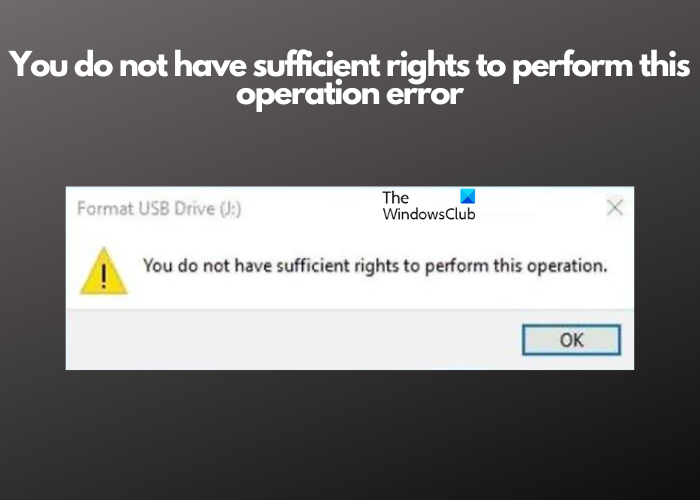
Formatting is necessary when you want to clean up the drive for data storage, ensure compatibility, or for installing a new OS. But this error can throw you off track even if you are logged in as an administrator.
What is the You do not have sufficient rights to perform this operation error?
When trying to format an external drive, the system may throw theYou do not have sufficient rights to perform this operation error. While this mostly arises due to a lack of necessary permissions, or an incorrect file system, there could be other possible reasons as well, such as:
- If you are not logged in as an administrator.
- Disk-related anomalies like bad sectors or file system errors.
- Conflicts due to internal or hardware connections.
However, we have found a few solutions that are 100% working to help you resolve the error and format the drive.
Fix You do not have sufficient rights to perform this operation error
Formatting the drive is crucial and hence, you cannot get stuck with the error for long. While you must check if the software is updated to the latest version, you can also disable third-party antivirus to check if it helps fix the error, You do not have sufficient rights to perform this operation. If that doesn’t work, try the primary troubleshooting methods we handpicked below based on their efficacy.
- Take ownership of the file or drive
- Grant administrator rights
- Run chkdsk
- Format the drive using Disk Management
- Use Diskpart command
1] Take ownership of the file or drive
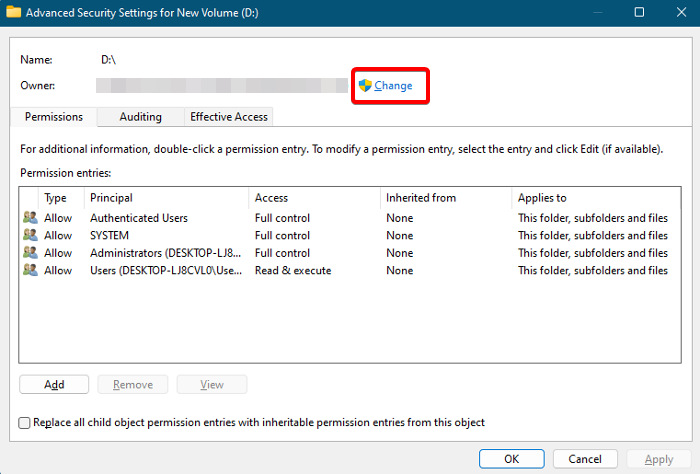
One of the major reasons behind this error is that the file or drive may not have sufficient permissions to be formatted. In this case, you would need to take ownership of the file or drive to continue with the formatting process.
For this, navigate to the file or drive, right-click on it, and select Properties.
Next, under the Security tab, click on Advanced.
Now, in the Advanced Security Settings window, go to Owner and click on Change.
In the Select User or Group window, click on Advanced.
Here, click on Find Now and it will pull up the Search results below. Select the correct username from the list and hit Enter.
It will take you back to the Select User or Group window. Click on Check Names to seal the username and press OK.
Press Apply and OK in the Advanced Security Settings window to apply the changes.
Read: You require permission to make changes to this folder
2] Grant administrator rights
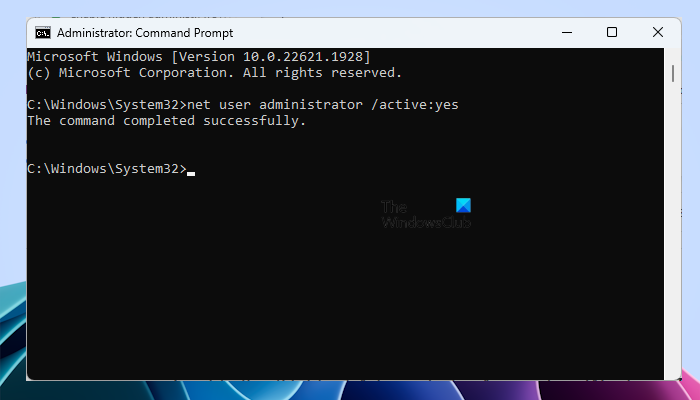
You may have taken ownership of the file or drive, but if you are not using the built-in administrator account to operate, it’s bound to throw an error. Therefore, we suggest to use the Command Line to enable administrator rights. Here’s how:
Launch the elevated Command Prompt, run the below command, and hit Enter:
net user administrator /active:yes
Now, exit the Command Prompt window, log out of the current user account, and log in to your admin account.
3] Run chkdsk
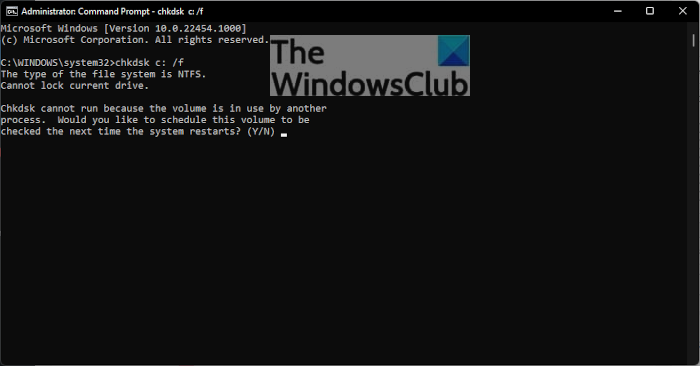
Sometimes, you may fail to format the drive due to anomalies with the hard disk. In this case, you can run the CHKDSK command to repair bad sectors and fix the file formatting issue.
To run the CHKDSK command, launch the Run console (Win + R), type cmd, and press the Ctrl + Shift + Enter shortcut key to open Command Prompt with admin rights.
Now, type in the below command and hit Enter to run CHKDSK for C drive:
chkdsk c: /f
Or, you can run the below command and hit Enter if you are using SSD as your main partition:
chkdsk c: /f /r /x
If the command returns an error message as shown below, press Y for yes and exit Command Prompt:
Chkdsk cannot run because the volume is in use by another process. Would you like to schedule this volume to be checked the next time the system restarts?
Now, restart your PC and wait till the disk scan is over and once the system is turned on, check for the results in the Event Viewer.
Read: Windows is stuck on Repairing disk errors, This might take an hour to complete
4] Format the drive using Disk Management
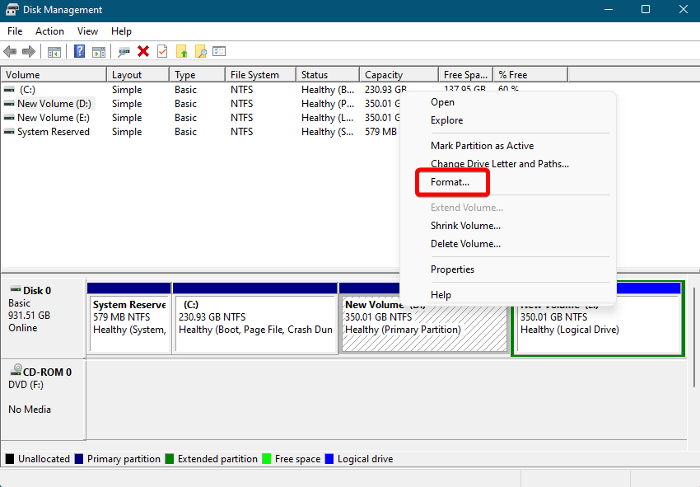
If you still encounter the error message, You do not have sufficient rights to perform this operation; you can use an alternative method to format the drive. For example, you can use the Disk Management tool to format a hard drive or disk.
Open the Disk Management tool, and it will show you a list of active storage devices and partitions.
Next, right-click on the target partition, select Format, and it will open the Format window for the selected drive.
Here, name the Volume label, select the File system, and Allocate unit size.
Now, select the options that work for you (Perform a quick format and/or Enable file and folder compression). Press OK to save the changes.
Now, wait for the process to complete, and the drive will be ready to use once done.
5] Use Diskpart command
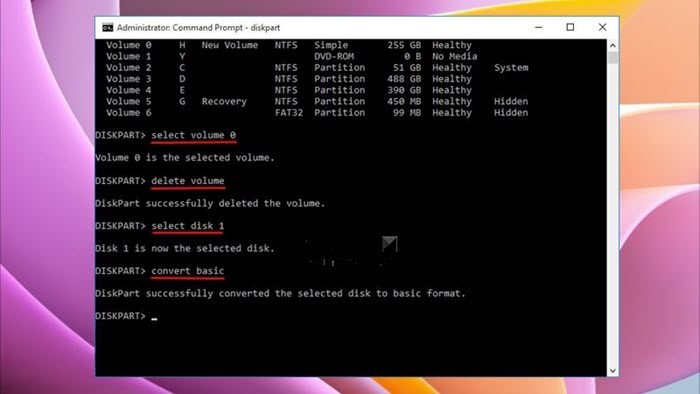
Alternatively, you can use the disk part command to format the drive, such as, manage drives, partitions, and volumes. However, before you run the tool make sure you remove the USB drive.
You can follow our detailed guide on how to format a USB pen drive using the command prompt using the Diskpart and Format commands.
How do I fix the FAT32 error on the pen drive?
To fix a FAT32 error on your pen drive, connect it to your device, go to This PC, right-click on it, and select Format. Now, select the file system as FAT32, and click Start. At the same time, make sure that you back up any important data in advance as formatting deletes all data on the drive.
How do I fix my USB without formatting it?
To fix a USB without formatting, first connect it to your computer. Use Windows built-in Error Checking tool by right-clicking the USB drive in ‘My Computer’, selecting ‘Properties’, then the ‘Tools’ tab, and clicking ‘Check’. Follow prompts to fix file system errors and bad sectors without formatting.